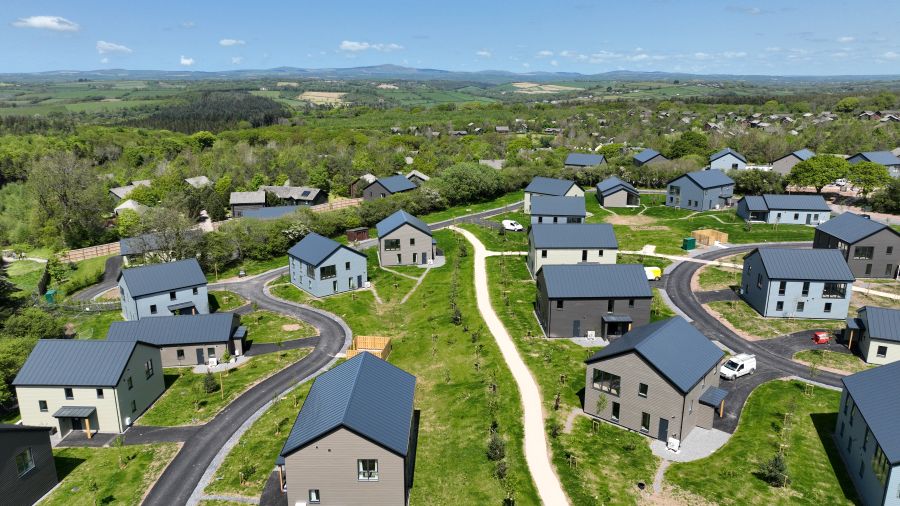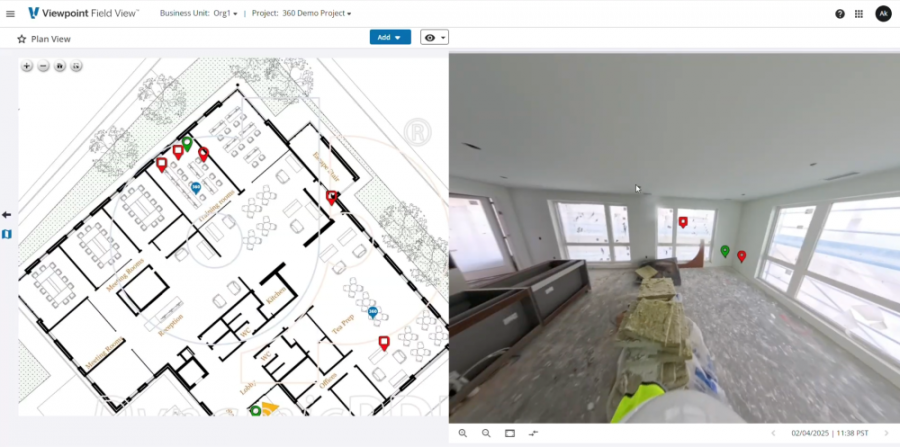Sixteen Grade II listed bungalows, owned by Birmingham City Council, were suffering from the effects of subsidence.
The bungalows, used by the council as social housing, were treated using Teretek, an innovative geopolymer resin injection technology from ground engineering specialists Mainmark, to strengthen the ground beneath the foundations.
The work was undertaken and completed with minimal impact on the envelope of the buildings or their surroundings. This enabled swift programming of the refurbishment works and helped to minimise the impact on the bungalow’s occupants.
The single storey, double fronted prefabricated bungalows, situated 6km from Birmingham city centre, were erected in 1945 and are the last surviving examples of only 2,428 ‘Phoenix Type’ buildings built throughout Britain. They were part of 156,623 prefab bungalows constructed between 1945 and 1949 to help address the housing shortage experienced after over 200,000 homes were destroyed across the country during WWII bombing raids.

In 1998, the bungalows were granted Grade II listed status as ‘unusual examples of a rare variant’ and were regarded as remarkable for their ‘exceptional preservation with few alterations’. The plans by Birmingham City Council included a full modern refurbishment of 15 bungalows with the last bungalow being refurbished as close to the original specification as possible to become a museum.
Before the refurbishment of structure and fixtures could begin, the subsidence evident from uneven and sinking concrete slabs in the bungalows needed to be addressed. A ground investigation was commissioned to understand the reasons for the subsidence and select the most appropriate method of treatment.
What underlying ground conditions needed to be considered when selecting the most appropriate subsidence treatment?
Several possible contributory factors for the subsidence experienced by the bungalows were identified in a ground investigation report.
Made ground consisting of sandy clay was found underneath two of the bungalows and such soils are ‘prone to failure from long-term settlement’.
Clay soils in the site area presented the risk of shrinkage of the ground experienced when the volume of clay falls as it loses moisture. The presence of several mature trees could also contribute towards depleting the moisture from surrounding areas.
The entire site was reported as being at risk from groundwater flooding with the groundwater level observed to be between 0.6m and 0.9m below ground level. Parts of the northern half were also at risk of surface water flooding increasing the risk of ground instability and foundation failure from the potential washing out of loose soils.
The concrete slabs were found to vary in thickness ranging from 150mm down to as little as 60mm. Such variability limits the ability of the building to cope with differential settlement and to prevent water ingress.
From the results of the ground investigation, the method of subsidence treatment chosen would have needed to cope with the potentially high-water table and a variety of soil conditions. However, given the delicate nature of working on listed buildings, the need to minimise disruption both to the residents, and the buildings themselves, when carrying out ground stabilisation was a key consideration.

Mainmark’s Teretek state-of-the-art engineered resin technology solution was chosen for its ability to strengthen the ground under the bungalows in a controlled and timely manner with minimal disruption to the listed buildings. The potential presence of high levels of ground water below the bungalows was not an issue for the geopolymer resin as it is hydrophobic in nature.
More traditional subsidence treatments such as mass concrete and piling often require excavation and use of machinery. This increases the length of subsidence treatment and is more disruptive when compared to the injection of resins where minimal equipment is required. In areas where ground water is an issue, excavations run the risk of collecting water hampering the speed and accuracy of the technique and this favoured the use of geopolymer resins for this project.
“We specified Teretek resin injection technology for the Wake Green Bungalow project because we wanted to ensure the least possible disruption for the occupants and limit the impact on the listed building site. The non-invasive nature of the resin injection technology as well as the scheduling flexibility Mainmark offered, meant that the ground stabilsiation phase of this renovation project could be delivered efficiently and cost-effectively,” Michael Siggers, Design Manager UK & Ireland for Equans (part of the ENGIE Group).
With the geotechnical investigation report already completed, the Mainmark team first carried out dynamic cone penetrometer (DCP) testing to determine the load bearing capacity of the soil and to plan the placement and injection patterns required for the bungalows.
During the subsidence treatment, a precise amount of Teretek resin was required, based on loadings and soil conditions, and was delivered through 16mm injection tubes at depths of 2m below the bungalows’ perimeter foundations and 1m below the interior spine walls.
Treatment on 10 unoccupied bungalows was completed within a 6-week period allowing the structural refurbishment works to begin. Typically one bungalow would take just over one day to be fully treated for subsidence using resin injection technology, however, the programme timings were determined by other works being carried out on site. The swift and precise targeting of the resin injection technology allows it to be flexible in its scheduling and take opportunities to treat subsidence as and when they arise. This contrasts with more traditional methods of subsidence treatment, where the reverse is true and other activities on site must accommodate the often disruptive and lengthy works required.
The residents in the remaining occupied properties are to be decanted into neighbouring bungalows once they had been newly refurbished. Mainmark will then return to complete the full set of listed bungalows.
Post penetrometer testing was conducted on the 10 bungalows to show the improvement in ground strengthening that had been delivered by the Teretek system. Here is an example of the dynamic penetrometer data logs for one bungalow labelled at ‘Unit 415’, showing both pre and post test results in graphical and numerical form:
For further information about Mainmark’s Teretek resin injection technology or to find out whether it is suitable for residential, commercial, industrial or heritage projects suffering from subsidence, contact Mainmark.





















